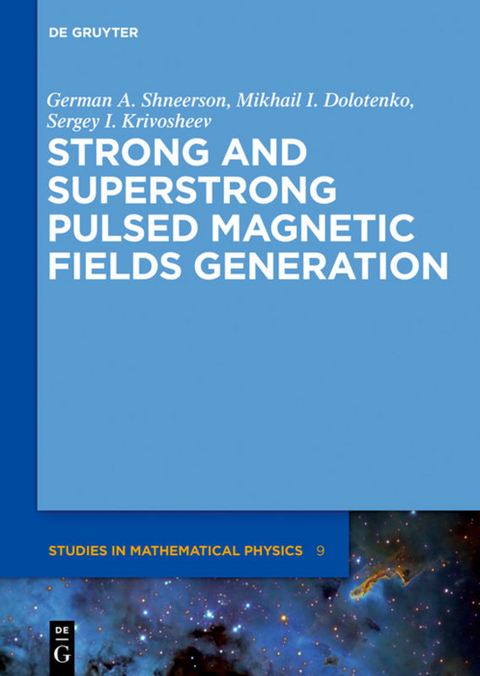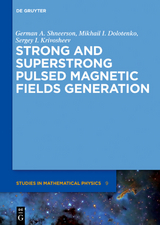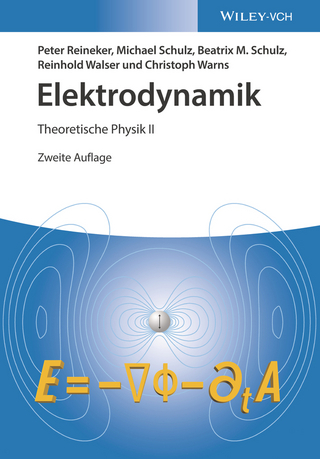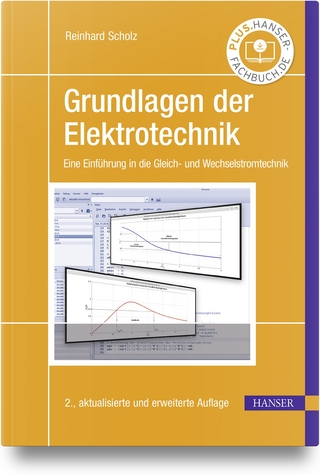Strong and Superstrong Pulsed Magnetic Fields Generation
De Gruyter (Verlag)
978-3-11-025191-3 (ISBN)
Strong pulsed magnetic fields are important for several fields in physics and engineering, such as power generation and accelerator facilities. Basic aspects of the generation of strong and superstrong pulsed magnetic fields technique are given, including the physics and hydrodynamics of the conductors interacting with the field as well as an account of the significant progress in generation of strong magnetic fields using the magnetic accumulation technique. Results of computer simulations as well as a survey of available field technology are completing the volume.
G.A.Shneerson,St.Petersburg Polytech. Uni.;M.I.Dolotenko,Nuclear Center,Sarov;S.I. Krivosheev, St.Petersburg Polytech. Uni., Russia.
Contents
Chapter 1. Typical configurations of magnets used for generation of pulsed strong magnetic fields. Basic formulae for calculation of the field in magnets.
1.1. Magnetic systems with the given current distribution.
1.2. Magnetic systems working in conditions of strong skin effect.
Chapter 2. Magnetic system matching with the energy source.
2.1. General requirements to the energy source.
2.2. Optimization of the system multi-coil solenoid - capacitor storage parameters.
2.3 Fabri optimization of the solenoids.
2.4. Optimization of magnetic systems used for acceleration of conductors by the electromagnetic forces.
Chapte 3. Electromagnetic forces and stresses in magnetic systems.
3.1. Stresses in the conducting layer with a given current distribution at the given external magnetic field.
3.2. Thin conducting layer with the azymuth current as an element of the multi-coil winding.
3.3. Azymuth current distribution providing uniformity of the azymuth stresses.
3.4. Stresses in the magnet winding at short pulses.
Chapter 4. Short review of multi-coil magnet structures.
4.1. Traditional structure solenoids with the uniform current distribution.
4.2. Bitter's solenoids.
4.3. Magnetic systems with equally loaded windings.
4.4. Nondestructive single-coil magnets.
Chapter 5. Quasiforceless systems (basic principles, possible ways of implementation).
5.1. Minimization of remnant stresses in windings with current distribution close to the forceless one.
5.2. Possibility to lower stresses in the region of the backward current and estimate of the aspect ratio..
5.3. Problem of balance of face parts. Magnetic systems constructed from the coaxial modules.
Chapter 6. Heating of conductors at the pulsed magnetic field.
6.1. Adiabatic heating of conductors at the given current distribution.
6.2. Linear regime of the field diffusion into the conductor.
6.3. Effect of the conductivity changes at heating upon features of the field diffusion into the conductor.
Chapter 7. Generation of superstrong fields in destructive single-coil magnets
7.1. Physical processes accompanying generation of the superstrong field.
7.2. Hydrodynamic flows in the single-coil solenoids. Application of the incompressible liquid model to description of the thick-wall coil deformation.
7.3. Hydrodynamic flow in the long magnet. The shock wave model.
7.4. The skin layer explosion at the superstrong magnetic field.
Chapter 8. Magnetic cumulation
8.1. Estimates of the induction amplitude and stopping radius at flow compression of the ideal cylinder shell. The experiment schematics.
8.2 Estimates of the magnetic pulse duration at the magnetic cumulation.
8.3. Field diffusion effect upon the induction amplitude at the magnetic cumulation.
8.4. Restriction of the induction amplitude due to the medium compressibility.
8.5. Shell instability due to the flow compression.
8.6. Experimental data on the magnetic cumulation and the computer simulation results.
8.7. Magneto-dynamic cumulation.
"[...] this book should be of interest for researchers in pure physics of super-strong magnetic fields, for engineers who develop devices that generate such fields, and for those who use them in various fields of practical application. Also, graduate students shall be able to greatly benefit from it." Zentralblatt für Mathematik
| Erscheint lt. Verlag | 29.9.2014 |
|---|---|
| Reihe/Serie | De Gruyter Studies in Mathematical Physics ; 9 |
| Zusatzinfo | 120 b/w ill. |
| Verlagsort | Berlin/Boston |
| Sprache | englisch |
| Maße | 170 x 240 mm |
| Gewicht | 865 g |
| Themenwelt | Naturwissenschaften ► Physik / Astronomie ► Elektrodynamik |
| Schlagworte | computer simulation • Pulsed Magnetic Fields • Pulsed Magnetic Fields; Computer Simulation; Technology • Technology |
| ISBN-10 | 3-11-025191-4 / 3110251914 |
| ISBN-13 | 978-3-11-025191-3 / 9783110251913 |
| Zustand | Neuware |
| Haben Sie eine Frage zum Produkt? |
aus dem Bereich




